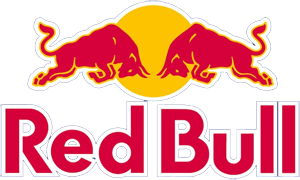Date: 25th January 2010
Training for dZi Endless Ascent
First off, today was my first day back on the ice, two weeks to the day since we finished Endless Ascent. I’m losing one fingernail, and the soles of my feet are still bruised. No more cheap socks ever!!!!! Other than that I’m OK, and it sure was fun to mixed climb today!
So how do you train to climb ice for 24 hours? That was the question I started asking myself in about June, and for once the internet was short of answers. I had a further problem in that I had some elbow tendonitis that was still clearing up. Or not clearing up, depending on the day… But the idea slowly took over my head, and the following is how I trained.
In April and May I rock climbed a ton, then had some elbow problems… In June and early July I was primarily kayaking with a few rock sessions mixed in, but paddling always starts the healing process in my body. I got way into kayaking again, great sport! Rodeo sessions, big days on the river, beating about in the woods but always going at it pretty hard. I reached a level of skill in kayaking I hadn’t had since about 1999, which was a ton of fun. Thanks to Patch, Becky and many others for the motivation.
Around the middle of July I added in the Crossfit main site (www.crossfit.com) workout of the day or “WOD.” I’d been messing with the WODs for a while and done CF cycles in the past, but in July I’d do these workouts on the days when I wasn’t too worked from paddling, mountain biking, hiking and flying or whatever, and do “catch-up” workouts as part of the warmup if I missed a session. Just the standard CF warmup is a lot of work, and the improvements in my ability to handle the sessions came quickly. Plus it’s a whole lot of fun! Lacking direct coaching I put in a lot of time looking at the exercises on the web videos etc, and learned a tremendous amount.
In August I was still kayaking some, but put more of my emphasis into Crossfit. My elbow was steadily improving–unless I went rock climbing and pulled on ropes to belay… For some reason that was guaranteed to set me back a week’s worth of careful icing and rehab. I was also doing once or twice weekly sessions of ART with Torben in Canmore, that felt effective to me (ART seems to work the best for me, thanks to James McIntyre in Calary for the original rehab). I primarily trained Crossfit at Athletic Evolution in Canmore, thanks to Brad for the motivation. Athletic Evolution isn’t a CF affiliate, but they had the bars and bumper plates, it’s a damn good traditional gym. Ya gott love a place where the owner gets psyched to blast the WOD with you.
In early September we did the first descent of the Atnarko, a tough river that flows from Charlotte Lake down toward Bella Coola. It was a real bitch of a run, four days instead of the planned two, and a lot of very difficult boat wrestling around log jams, etc. etc. Magical place, great trip! I felt a lot stronger even after only a couple of months of Crossfit–I think that at my advanced age (42) I had a host of weaknesses in my body’s basic function (jumping, squats, presses, etc. etc). Crossfit put the light on those weaknesses, and helped correct them. CF isn’t perfect, but it’s damn effective for general physical fitness. I have no affiliation with CF.
In mid-September I fully committed to the 24-hour ice climbing idea. My elbow wasn’t perfect, but it was holding up with regular maintenance and careful use. I wasn’t sure it would hold up for 24 hours, but if you don’t commit you don’t find out.
Kayaking and ice climbing share a surprising amount of movements; hanging onto a paddle isn’t wildly different than hanging onto a modern leashless ice tool, and repeatedly pulling and pushing on the paddle is a lot like doing the same with ice tools. Crossfit was taking care of my legs and the rest of my body, as was all the hiking I was also doing. Although I didn’t know it at the time, I think those long river paddling sessions built a huge endurance base in my upper body and even mind.
From mid-Septmber to mid October I just did Crossfit, but added some specific climbing exericses (flicking tools overhead, subbing one-arm pulldowns for pullups, a few other additions) that fit into my Crossfit warmups. I also did a lot of hiking up hills and wrestling a two-year old at night to work on my sleep deprivation. Seriously.
In late-October we were having real problems with ice here in the Rockies; normally there’s lots, but it just wasn’t happening. I further tuned my Crossfit workouts to reflect the sort of workload I thought I might experience climbing for 24 hours. One-arm lat pulldowns on a rope (my elbow was doing well enough to handle this load) in sets of 50 (that sure is fun…), lots more air squats. The basic move of ice climbing is a staggered hands low-weight pull-up with the balance of your weight in a basic air squat. Feet at the same level (this is the most common mistake in ice climbing–your feet should always be at very close to the same level), hike feet up with straight arms, push up with legs, place high tool, repeat to the top. Feet always at the same level, tools never at the same level, twice as many foot placements at least as tool placements…
In early November I got out on the ice a little, but there just wasn’t that much that was in that was steep enough for good training. I hit what there was (Nemesis, etc. etc.), but doing a three-pitch route just does not offer the required volume of movement, nor does it take enough time (with modern tools and gear Nemesis can be done pack to pack in under two hours, with only about 30 minutes of actual climbing–the hiking likely provides more training, as does climbing mixed routes in the area). I moved farther away from Crossfit and more toward developing the specific strength of vertical or near-vertical ice climbing (hanging onto my tools for long periods in my garage, calf raises, etc). I then built the Plice (http://gravsports.blogspot.com/2009/11/its-come-to-this-plice.html), which was great, and did more specific workouts in Texas during US thanksgiving. I was also doing some very long days out in the woods hunting for ice and generally beating around. Lots and lots of early starts, late nights, long walks.
By the last few days of November I was finally able to run laps in Haffner and Marble Canyon. Initially 1,000M (3,000 feet) was all we were hitting. Temperatures were really, really cold, so we were doing 20 minutes on and 20 minutes off. This meant basically sprinting on top rope for 20 minutes, climbing anywhere from 300 to 700 feet as we got better at climbing fast for 20 minutes. Without Brad, EJ, Gordon, Scott, Ian, Keith and everyone else who sessioned the Endless Ascent would never have happened! Having good training partners is truly essential to success.
I tried for a basic day on/day off schedule as my body allowed or felt good about, and got a solid 12 ice sessions in by Dec 31 plus a lot more on the Plice. The Crossfit and Plice were savagely effective; I wasn’t getting sore on the ice at all, even as we bumped the days toward 6,000 feet of climbing. The 20 on/20 off was fair to my partner and me; if I were going well I could pump out 6 and sometimes 7 laps before the alarm on my phone went off… I would be thrashed after each of these sessions, truly sick of climbing, cold, and just done. This was not a comforting realization when contemplating climbing for 24 hours. I was also worried that the 20 on/20 off format would not be effective for long-duration climbing. But you simply can’t climb slowly enough on vertical ice to make it “easy aerobic,” your arms and calves pump out. You need to climb, rest, repeat. In retrospect I worried way too much about the lack of long-duration low-intensity climbing-specific movement, doing 20 on/20 off was excellent. Or maybe it was the long kayaking days in the summer that provided the base? Hmmm…
I learned a lot about ice climbing fast and efficiently through all of these thousands and thousands of feet. When you’re doing huge volumes of ice little differences in movement patterns add up quickly. I developed huge calluses on my little fingers from hanging onto the Cobras and new Fusions. I learned so much about dynamic movement on ice, momentum, and a subtle hip push very similar to the finish of a good squat that, when combined, really helped a tremendous amount. I’ve now been ice climbing for over 25 years off and on, and perhaps the most important thing I’ve learned is that being a good ice climber is all about mileage on ice. This training program took my mileage and understanding of movement on ice to a whole new level for sure. I was never bored while running laps believe it or not, it was always a game to climb better and better, and figure out what that meant. I know my heart rates pretty well from years of wearing a monitor, the spikes were violent.
On January 1st I did some easy solo laps then some TR laps in Ouray, followed by bigger sessions on roughly January 3, 5 and 6th. I rested on the 7th and 8th except for teaching a clinic (thanks for the fun to all who came!) and a bit of media posing. On January 9th I went into the hole and had at it. I figured I’d done more than 150,000 feet of ice and Plice plus all the off-season training, long kayaking days and Crossfit.
On January 10th at noon we all (THANKS!) finished. 194 Laps, 13 or 14 in the last hour thanks to a “bonus” offer for the dZi foundation. I kept moving for an average of at least 50 minutes an hour for the entire 24 hours. My longest break came when I attended Guy Lacelle’s memorial.
I know I could have trained better, but I think my biggest mistakes came during the actual climb, not in training for it. This was a complete stab in the dark, a total shot into the unknown for me, and broadly I was able to hit my goal and keep climbing. So, in short, the physical training worked. It wasn’t easy, and more on that later, but my body did its job far better than I thought it would. I wanted to climb about 11,500 feet, and by a conservative estimate did at least 25,000. I was amazed at what my body could do, I genuinely never thought that possible. And my arms are still smaller than my wife’s for Christ’s sake!
My mental training consisted primarily of visualizing horrid situations, and how I would deal with them. If I broke my ankle and could still hop I visualized how I would do my best to keep climbing. I practiced climbing with one tool in case I hurt a hand or arm, and with my elbow locked in case my tendonitis got so bad I couldn’t bend my arm. I hopped some pitches on one foot to simulate climbing with a minor or serious broken lower leg. My one over-riding mental image was that, unless I was unconscious or totally unable to function in the opinion of those around me, I would keep climbing no matter what. I spent so much time visualizing moving in extreme pain, with bad stomach cramps, with injuries, and wanting to quit but punching through anyhow that during the actual climb I always felt sort of OK. Yeah, I puked, yeah, I wasn’t all there mentally and it sucked at times, but I had put so much mental prep into deciding that no matter what happened I was going to keep moving that I never seriously doubted I could keep going for one more lap, and those laps added up. Plus I could never have looked any of the great people who were helping out, cheering, heckling or just being there in the eye and quit. No way.
I often thought that it would be very pleasant to stop and stop hurting, to get some sleep, to slow down, but my mental state was always based around the basic premise that unless I was seriously injured or completely out of it that I was going to keep climbing. So I did, that was my standard.
I always put a tremendous amount of negative thinking into my gear, nutrition/hydration, clothing, etc. etc. I’m going to write about what I used for all of that in future pieces, but I solved a lot of potential problems by running really negative scenarios and then solving the wild problems my mind could come up with. In my shows I talk about the “Positive Power of Negative Thinking,” and I really believe in doing just that. Yeah, think positive, but only after a tremendous amount of critical and detailed preparation. Negative thought and planning yields positive outcomes in critical situations.
I have some designs on other 24-hour stuff unrelated to roped climbing, and writing this stuff down now may help me in planning that. More to come, this is one epic blog post!
Posted in: Blog
"if you don't commit you don't find out"
Fuckin' a. Nice friggin' work, man!
Cool event, right in our backyard. Thanks for the recap.
Hypoxia CrossFit
I'm more than happy to hear your thoughts on what I've written. Please note that all comments will be moderated before publishing. Thank you for joining the conversation.



